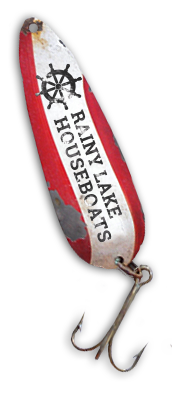Slip Bobber Fishing
For many of us, our first time fishing may have been with a bobber. It is not only fun but also highly effective. I use slip bobbers mainly for walleye and crappies but do catch smallmouth and northern pike from time to time.
I often use 1/8 jigs tipped with minnows or leeches underneath my slip bobber. Setting up a slip bobber is very easy to do. 6 lbs. test monofilament is the best choice for line. A slip bobber comes in different sizes and shapes. They all have one thing in common; a cylindrical channel runs through the center of the bobber from top to bottom. Along with the bobber you need a bead and a thread or string that is wrapped around a plastic sleeve. The beads and sleeve are often sold separately but in the same section at most tackle shops. Complete picture steps are shown at the end of the article.
I consider shallow water less than ten feet. To rig your slip bobber slide the plastic sleeve with the thread or string up your line at least eight feet. Now grasp the sleeve and slide the string onto the line towards the rod tip. Grab the ends of the string and pull tight so the string grasps the line tightly. I even use two forceps or needle-nose pliers and snug the string tighter. Next, slide the bead up the line, then slide the bobber up the line; very important to push the line through the bobber inserting the line into the smaller hole located on the top, on the bottom of the bobber the hole is large. Next tie the jig onto the line using an improved clinch not or Palomar knot.
I hook a live minnow through the back or lips. Be careful when you cast, make sure the minnow stays on the hook! Your bobber will lie flat or sideways until the jig pulls the bobber upright. I like the jig to ride one to two feet off of the bottom. How do I know if it is set right? If your bobber is pulled upright reel it in and slide the string knot up in one-foot increments until the bobber lies on its side. Once this happens reel it in and slide it down a foot, add your minnow or leech and cast it to your spot. The sliding knot allows you to change depths easily. Generally speaking, when you are fishing in 3-10 feet of water the jig can be set from 6 inches to 2 feet of the bottom. Whenever you slide the up or down keep track of how far you slide it either way.
I like to fish structure that is visible with your most important piece of equipment-polarized sunglasses, amber in color. Cast to edges, out from and around the structure. I like to fish the side that the wind is blowing into.
Earlier in the article, I suggest moving the string up eight feet on the line and then slide the string off. The reason for this is simple, if you tighten the string two feet up you have to slide the knot you have creates up to the desired depth, the knot will become loose and slide on the line when going through the rod guides.
Setting the hook on a strike is easy with a slip bobber. When you see the bobber going down start to reel the slackline keeping your rod tip close to the surface of the water, set the hook with an upward motion, and reel at the same time and the fight should be on!
Crappies are just a little bit different. I still like a slip bobber but the jig is only set about 18 inches under the bobber. This is different from the technique above. I like four lbs. test line and 1/16 or 1/32 oz. jigs. The assembly of the slip bobber is the same as walleye fishing except the jig will be much closer to the bobber and the plastic sleeve will be removed just two feet from the end of the line. I sometimes tip jigs with a crappie minnow but find the most effective jig to be a small colorful tube jig. Crappies are found along the shallow rock piles, pencil reeds, deadheads on the Minnesota side of Rainy Lake. Cast the jig and bobber to the edges of the rock piles keeping close an eye on the bobber it should float upright, sometimes crappies will swim with the bobber and it does not go down, it moves sideways or only goes down part ways. When you see this pick up the slack and set!

